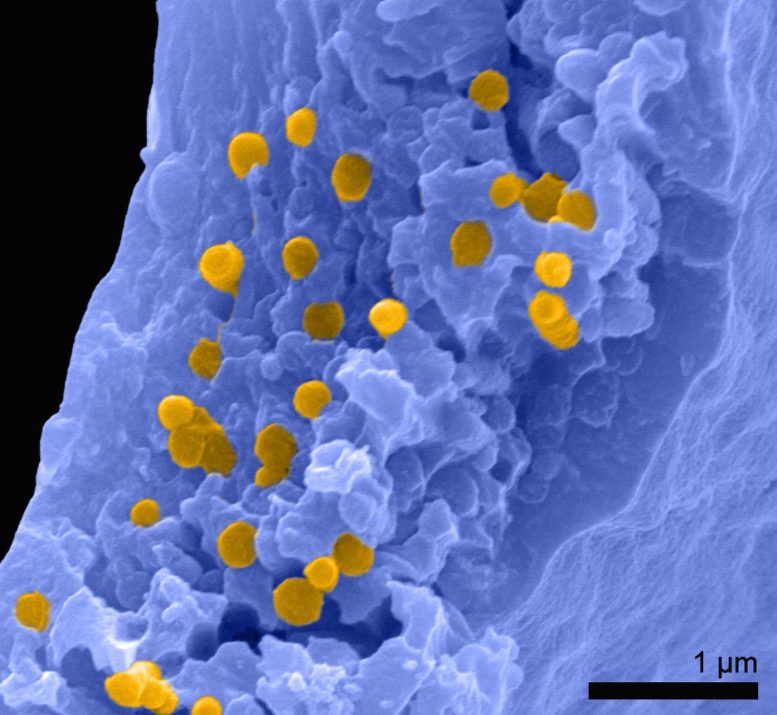
False color scanning electron microscopy image of zebra finch feather showing the feather cortex (in blue) and melanosomes (melanin-rich granules, in orange). Scale bar indicates 1 µm. Credit: Dr. Tiffany Slater
- Paleontologists discovered molecular evidence of phaeomelanin, the pigment that produces ginger coloration.
- “This will paint a more accurate picture of ancient animal color.”
- Phaeomelanin is now toxic to animals – discovery may be first step in understanding its evolution.
Paleontologists at University College Cork (UCC) have found the first molecular evidence of phaeomelanin, the pigment that produces ginger coloration, in the fossil record.
The new study reports the preservation of molecular fragments of the pigment phaeomelanin in 10-million-year-old frogs, adding molecular analysis to the paleontologists’ arsenal when reconstructing the original colors of extinct organisms.
The study, published today (October 6) in Nature Communications, was led by paleontologists Dr. Tiffany Slater and Prof. Maria McNamara of UCC’s School of Biological, Earth, and Environmental Sciences (BEES) and Environmental Research Institute (ERI). They worked with an international team of scientists at Fujita Health University (Japan), Linyi University (China), and Lund University (Sweden).
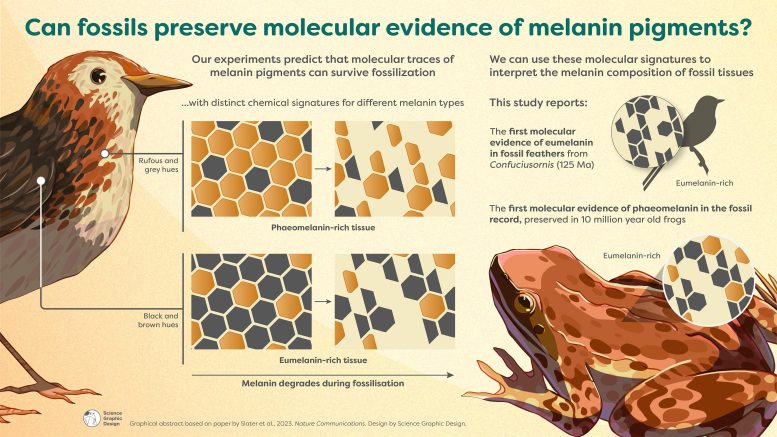
Illustration of the main findings reported in Slater et al., 2023 published in Nature Communications. Credit: Science Graphic Design
Dr. Slater said: “This finding is so exciting because it puts paleontologists in a better place to detect different melanin pigments in many more fossils.
“This will paint a more accurate picture of ancient animal color and will answer important questions about the evolution of colors in animals. Scientists still don’t know how – or why – phaeomelanin evolved because it is toxic to animals, but the fossil record might just unlock the mystery.”
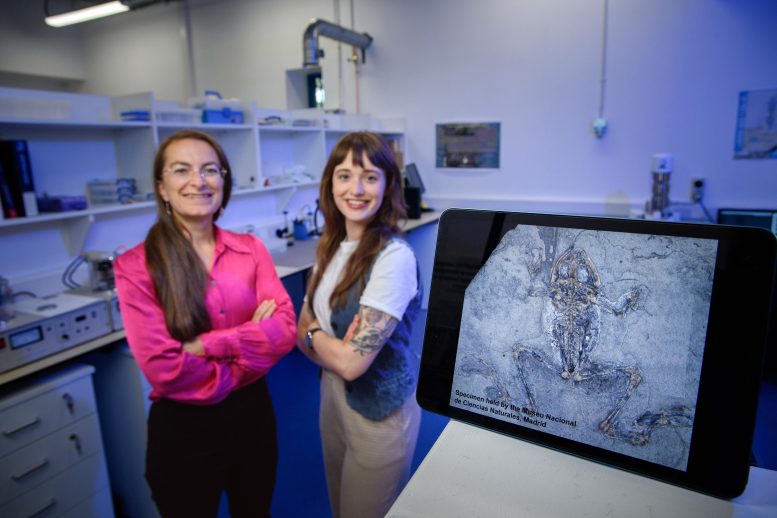
Prof. Maria McNamara (left) and Dr. Tiffany Slater pictured at the School of Biological, Earth and Environmental Sciences at University College Cork. Credit: Daragh Mc Sweeney/Provision
The team performed rigorous laboratory experiments on black, ginger, and white feathers to track how phaeomelanin pigments degrade during the fossilization process, which backs up their interpretations of the fossil chemistry.
Prof. McNamara, senior author on the study, said, “Fossils are invariably altered by the ravages of heat and pressure during burial, but that doesn’t mean that we lose all original biomolecular information. Our fossilization experiments were the key to understanding the chemistry of the fossils, and proved that traces of biomolecules can survive being cooked during the fossilization process.
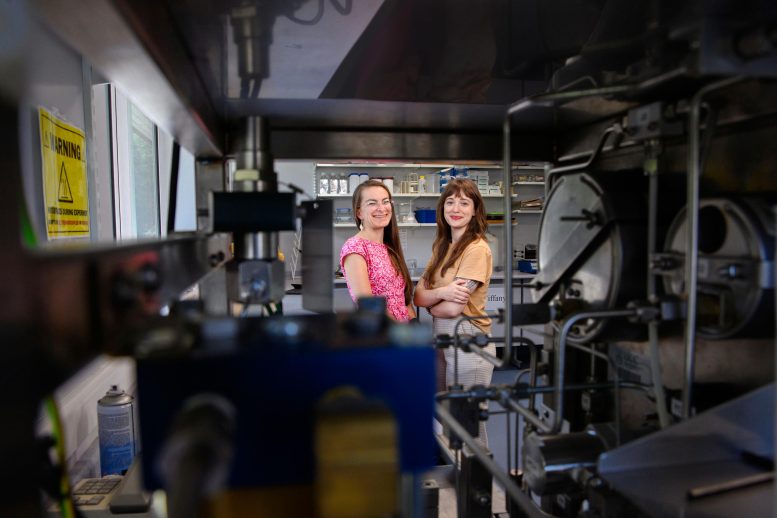
Prof. Maria McNamara (left) and Dr. Tiffany Slater pictured at the School of Biological, Earth and Environmental Sciences at University College Cork. Credit: Daragh Mc Sweeney/Provision
“There is huge potential to explore the biochemical evolution of animals using the fossil record, when we account for chemical changes during fossilization.”
Reference: “Taphonomic experiments reveal authentic molecular signals for fossil melanins and verify preservation of phaeomelanin in fossils” by Tiffany S. Slater, Shosuke Ito, Kazumasa Wakamatsu, Fucheng Zhang, Peter Sjövall, Martin Jarenmark, Johan Lindgren and Maria E. McNamara, 6 October 2023, Nature Communications.
DOI: 10.1038/s41467-023-40570-w



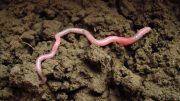





Be the first to comment on "Paleontologists Unearth Ginger Pigment Secrets From 10-Million-Year-Old Frogs"